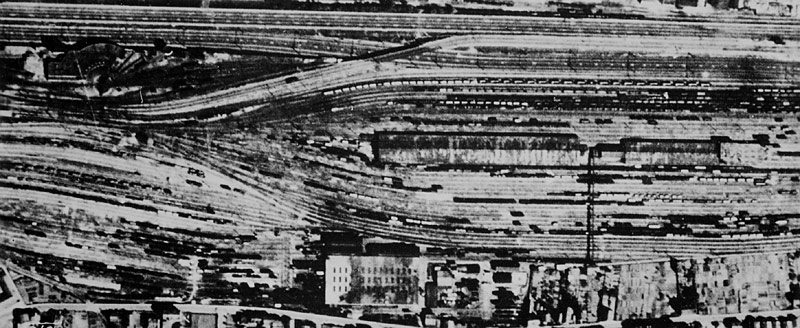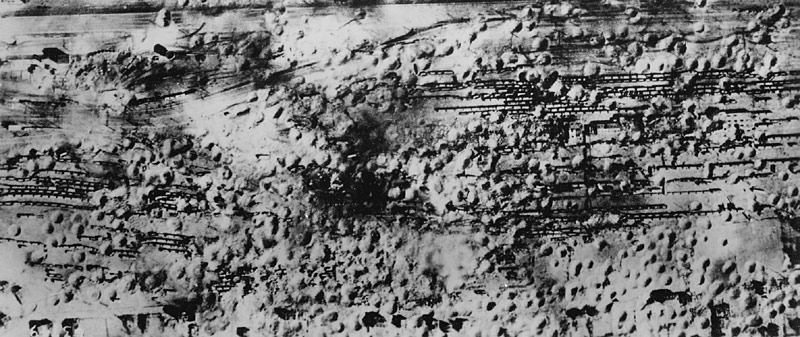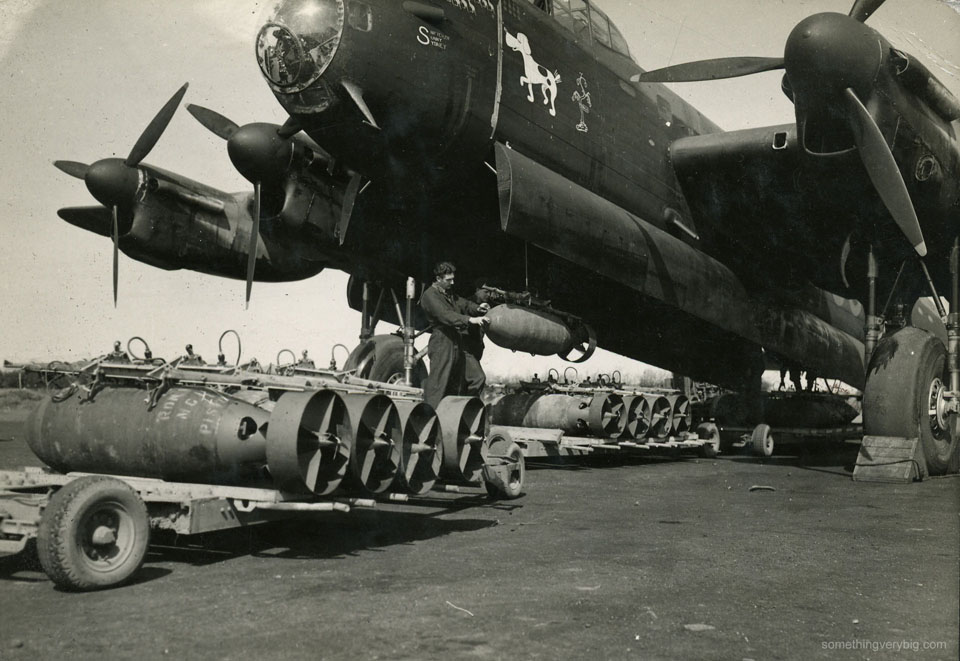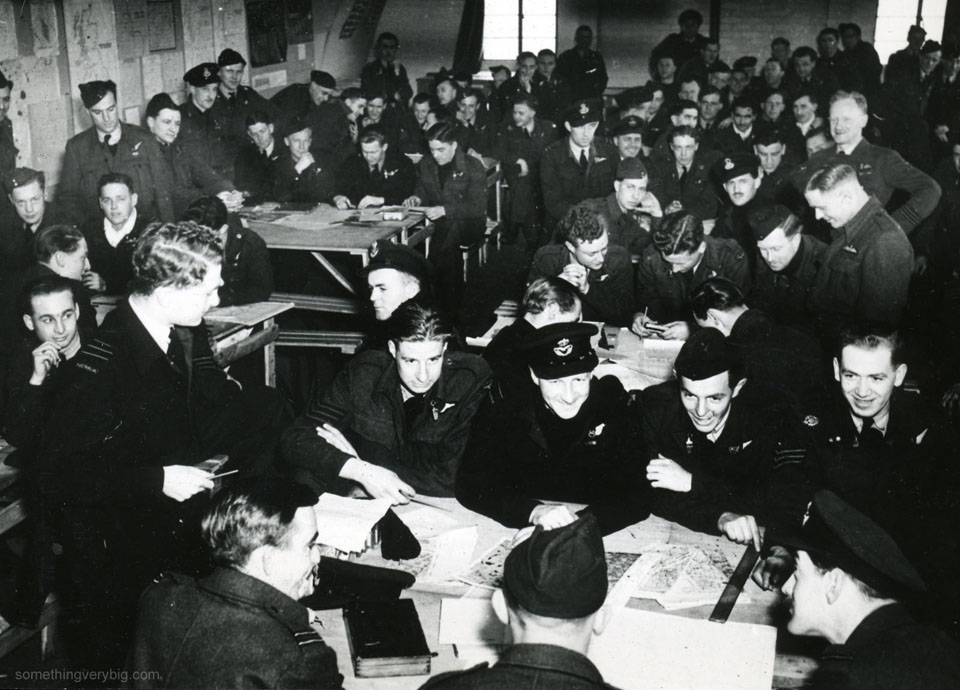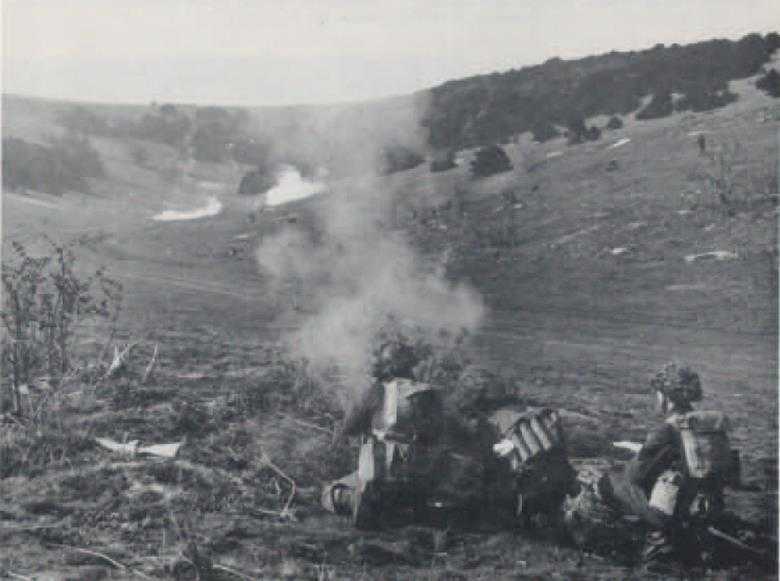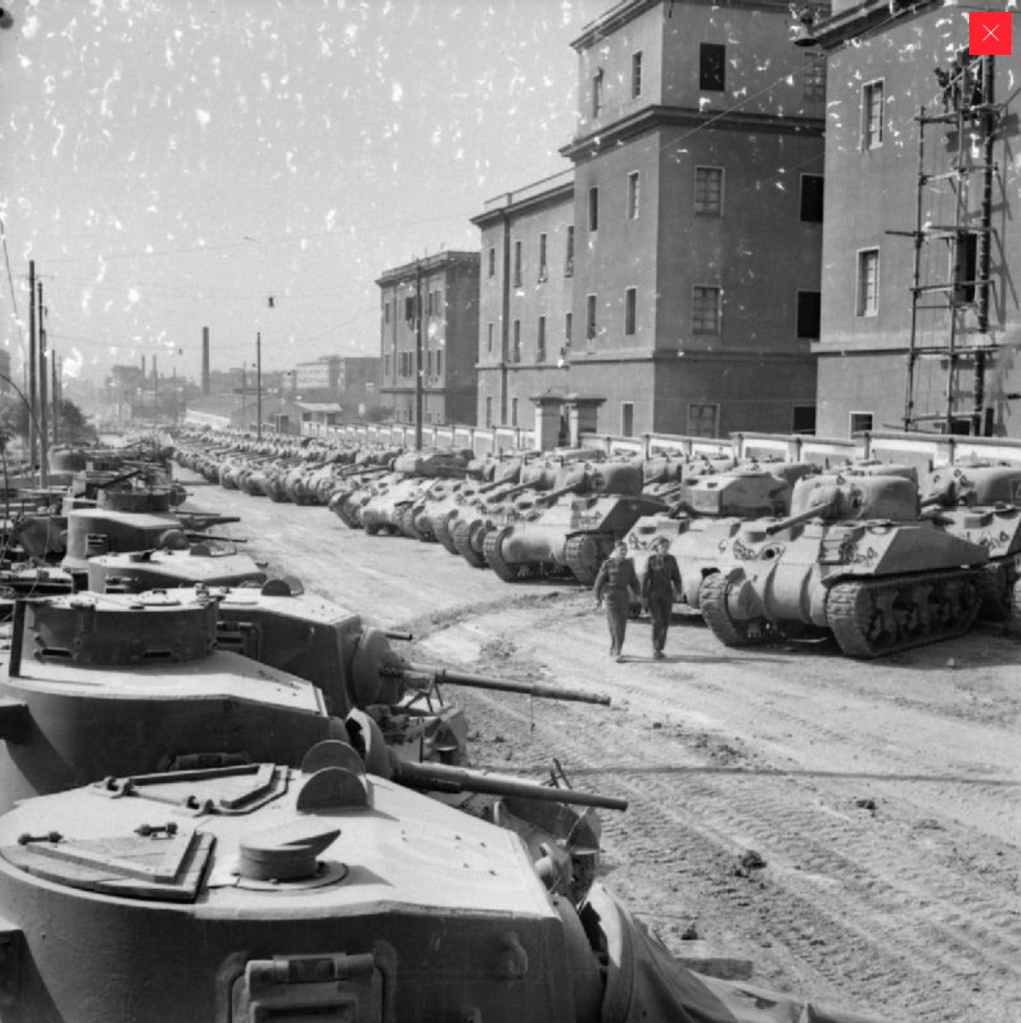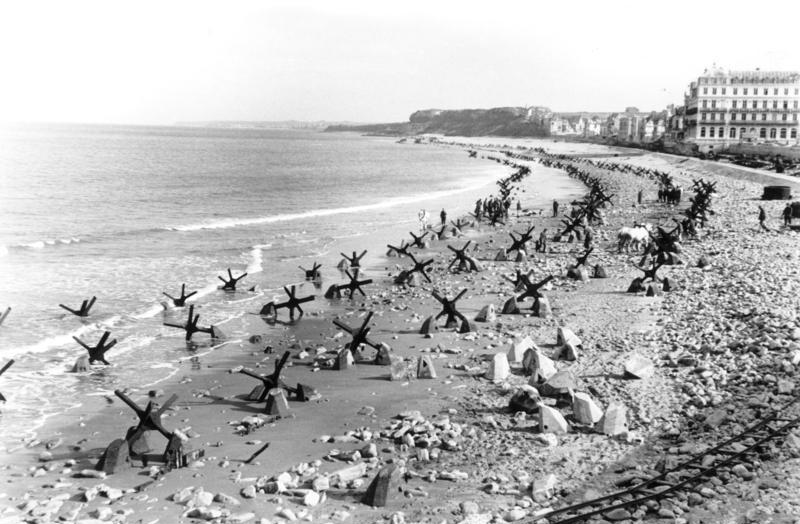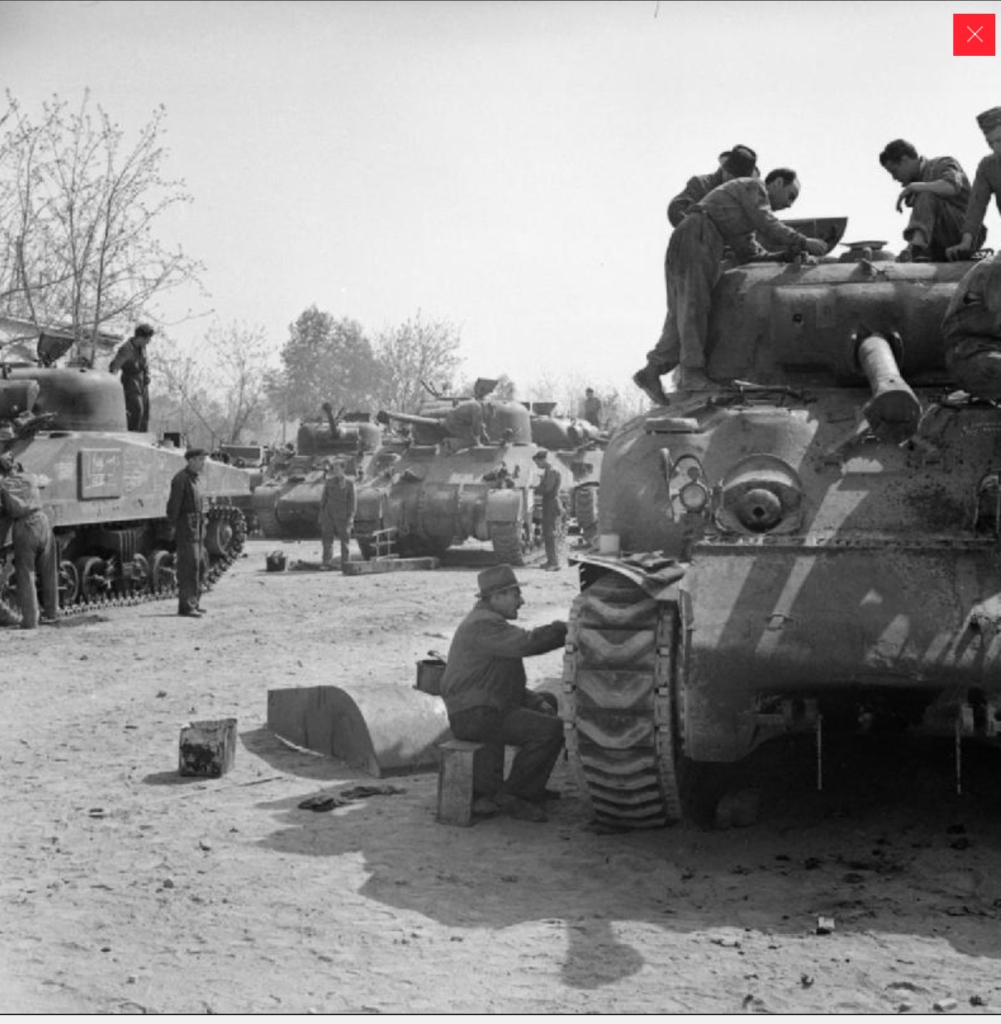Air Operations, Carolines
- 22 B-24s from the 13th Air Task Force’s 5th Heavy Bomb Group and several 868th Heavy Bomb Squadron SB-24s, all newly based at the Momote airfield on Los Negros, provide distant support for the impending invasion of Hollandia, New Guinea, with the first in a series of nine daylight attacks against the airfield and other targets in the Woleai Atoll.
- 14 307th Heavy Bomb Group B-24s attack the airfield at Satawan in the Nomoi Islands.
- 41st Medium Bomb Squadron B-25s attack Ponape Island.
- During the night, RAAF Catalinas mine the waters in and around the Woleai Atoll.
- VII Bomber Command B-24s attack the Truk Atoll.
Air Operations, CBI
BURMA- 7 7th Heavy Bomb Group B-24s attack a fuel plant at Yenangyaung.
- 5 B-24s and 7 459th Fighter Squadron P-38 fighter-bombers attack Ywataung.
- 2 B-24s attack Akyab.
- 15 12th Medium Bomb Group B-25s and 4 10th Air Force P-51s attack Kamaing and targets along the Bhamo-Myitkyina road.
- 6 12th Medium Bomb Group B-25s attack the rail line between Mandalay and Shwebo. 24 10th Air Force A-31s attack Japanese Army positions near Buthidaung.
- 42 A-31s attack Fort White, Tamu, and Tiddim.
- To correct a problem in which standard bombs dropped at low altitude from speeding B-25s tend to bounce far over their intended targets—especially railroad track beds—12th Medium Bomb Group B-25s begin testing a new 'spike' bomb designed to embed itself in the roadbed after being dropped at speeds as high as 220 miles per hour. The experiment is deemed a success and spike bombs become a highly effective part of the 10th Air Force’s standard arsenal.
Air Operations, Central Pacific
VII Bomber Command B-24s attack Wake Island.
[Air Operations, Europe
- The last air raid on London ends the 'Little Blitz' with an attack by 125 aircraft. 53 tons of bombs are dropped with a large hospital being hit. 14 planes are lost.
- B-17s and B-24s bomb the Heinkel works at Oraniaenburg and other targets near Berlin. RAF Bomber Command delivers a record total of 4,000 tons against the marshalling yards and railway workshops at Juvisy, Noisy-le-Sec, Rouen, and Tergnier. Mosquitoes attack Berlin.
Evening Ops:
- 273 Lancasters and 16 Mosquitos of Nos. 1, 3 and 8 Groups are sent to Rouen. Bomber Command claims a concentrated attack on the railway yards with a lot of damage. There are no losses.
- 202 Lancasters and 4 Mosquitos of No. 5 Groups and 3 Oboe Mosquitos of No. 8 Group are sent to railway targets at Juvisy. The attack appears to have been successful. 1 Lancaster is lost.
- 181 aircraft are sent to hit the railway yards at Noisy-Le-Sec. In this total are 112 Halifaxes, 61 Lancasters and 8 Mosquitos of Nos. 6 and 8 Groups.
- The local report describes results which are typical of these railway target raids. The marshalling yards, the engine-sheds and the railway workshops suffer great damage. About 200 delayed-action bombs continue to explode in the week after the raid. A through line is established several days later but the marshalling yards are not completely repaired until 6 years after the war. In addition to this railway damage, however, the bombing area measures as 6km long and 3km wide. 750 houses are destroyed and more than 2,000 damaged. 464 French people are killed and 370 injured.
- 8 Halifaxes are lost.
- 171 aircraft are sent to Tergnier. Included in this total are 139 Halifaxes, 24 Lancasters and 8 Mosquitos of Nos. 3, 4 and 8 Groups.
- 50 railway lines are blocked but most of the bombing falls on housing areas southwest of the railway yards.
- 6 Halifaxes are lost.
- 88 Halifaxes, 44 Stirlings and 36 Lancaster lay mines off Swinemünde, in Kiel Bay and off the Danish coast.
- 2 Stirlings and 1 Halifax are lost.
- 24 Mosquitos are sent to Berlin, 2 to Osnabrück and 2 to Lemans, and there are 9 RCM sorties, 32 Serrate patrols and 46 OTU sorties.
- There are no losses.
|
|
FRANCE:
- 12 2nd Bomb Division B-24s conduct an experimental attack against V-weapons sites at Watten.
- 275 1st Bomb Division B-17s attack aircraft-industry targets at Oranienburg and several targets of opportunity, including the Perleberg Airdrome.
- 159 2nd Bomb Division B-24s attack aircraft-industry targets at Brandenburg and Rathenow.
- 89 2nd Bomb Division B-24s attack various targets of opportunity.
- 210 3rd Bomb Division B-17s attack the Luneberg Airdrome, an aircraft-industry plant at Oranienburg, and several targets of opportunity.
- 19 heavy bombers are lost including 1 interned in Switzerland
- Escort for the heavy bombers is provided by 634 USAAF fighters. 5th Fighter Group P-51 pilots down 4 Luftwaffe fighters over Germany between 1425 and 1500 hours.
- 5 USAAF fighters and their pilots are lost
FRANCE:
- 277 IX Bomber Command B-26s and 37 A-20s attack marshalling yards and gun emplacements at Calais, Charleroi/St.-Martin, and Dunkirk.
ITALY:
- XII TAC P-40s and P-47s attack fuel dumps and rail and communications targets.
ITALY:
- 15th Air Force P-38s and P-47s down 7 Luftwaffe fighters and damage or possibly destroy 6 others during a midafternoon fighter sweep to the Udine area.
Air Operations, Japan
3 28th Composite Bomb Group B-24s reconnoiter Matusuwa, Onnekotan, and Paramushiro islands, and attack the Kashiwabara airfield on Paramushiro.
[Air Operations, Marianas
- 7 US Navy PB4Ys from VD-3 and US Marine Corps PB4Ys from VMD-254, all from the AirSols photographic wing, open a unique reconnaissance effort against Japanese bases in the Marianas, about which little is known. Beginning with a 1,252-mile flight from Henderson Field, Guadalcanal to the Eniwetok Atoll, the PB4Ys lay over at Eniwetok for a day, then with escort provided by 5 30th Heavy Bomb Group B-24s, they proceed to the Momote airfield on Los Negros via Saipan or Guam (1,017 and 1,035 miles, respectively). Film exposed on such flights is developed on Manus Island and then transported to Pearl Harbor via Henderson Field, Guadalcanal. Photographic reconnaissance missions of this type will be conducted through late May, until the departure of the Marianas invasion force from Hawaii.
- On the first mission, after the 5 B-24s drop 100-pound bombs on Saipan, 1 B-24 is forced to land in the water near a US destroyer following interception over the target area by at least 18 A6Ms Zeros.
Air Operations, New Guinea
- 380th Heavy Bomb Group B-24s based in Australia attack the airfield at Babo.
- V Bomber Command B-24s attack the airfield at Manokwari.
- V Fighter Command fighter-bombers attack Madang.
Britain, Home Front
The Government makes incitement to strike a punishable offense.
[CBI
BURMAThe advance guard of 5th Brigade makes contact with the Kohima garrison restoring its communications. The Chindits finally occupy the Japanese supply base at Indaw. The occupation cuts a vital Japanese rail link between Myitkyina and southern Burma.
INDIAThe beleaguered Allied garrison at Kohima is finally relieved by the 5th Brigade of the XXXIII Corps. The fighting does not abate, however. Both the Japanese and the British are attempting encirclement and flanking maneuvers against each other, and severe battles are raging in the hilly jungle-covered terrain surrounding Kohima.
[Caroline Islands
The US 13th Air Force sends the B-24 Liberators of the V Bomber Group against the Japanese base at Woleai. This is the first of a series of attacks intended to prevent any interference by Japanese aircraft with troops landing in the area of Hollandia, in New Guinea. This action shows that the Japanese bases in the southern Pacific have been completely neutralized.
[Eastern Front
There are important German attacks around Buchach which are designed to help free units trapped farther east. In the Crimea the Russians take Balaklava and begin operations in the outskirts of Sevastopol.
SOUTHERN SECTORProbing attacks continue against the Sevastopol perimeter as the 51st, 2nd Guards and Independent Coastal Armies search for weak points in the German defenses. Balaklava falls during heavy fighting. At this stage of the battle there are 124,000 Axis soldiers inside Sevastopol.
[Italy, Politics
Marshal Badoglio resigns as head of the Italian government, but the king requests that he remain with a reconstituted cabinet.
[Operation OVERLORD
The British Government bans all coded radio and telegraph transmissions from London and elsewhere in the British Isles. Diplomatic bags are to be censored and diplomats are to be forbidden to leave the country. The only exemptions are for the USA and USSR and, a tribute to their excellent security, the London Poles. The telephone service to Southern Ireland and the distribution of newspapers to there and to Gibraltar has already been stopped on April 5. These measures are designed to help with the security of the preparations for D-Day.
[Pacific
- The US submarine Gudgeon (SS-211) is sunk, probably by Japanese naval aircraft (901st Air Group), southwest of Iwo Jima.
- The US submarine Tambor (SS-198) sinks the Japanese guardboat No.3 Shinko Maru about 300 miles northwest of Wake Island.
- The US freighter John Straub (7176t) hits a mine off Sanak Island, Aleutians and sinks losing 40 crewmen and 14 of the 27-man Armed Guard. Survivors are rescued by the Army coastal freighter FP-41.
Images from April 18, 1944
|
|
|
|
|
|
Loading a Jeep into an RAF Douglas Dakota |
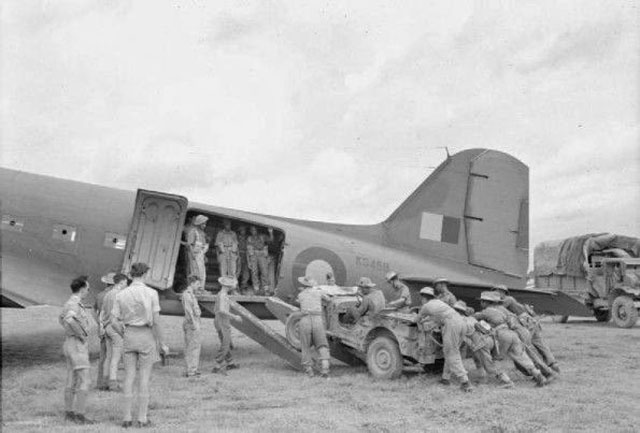 |
